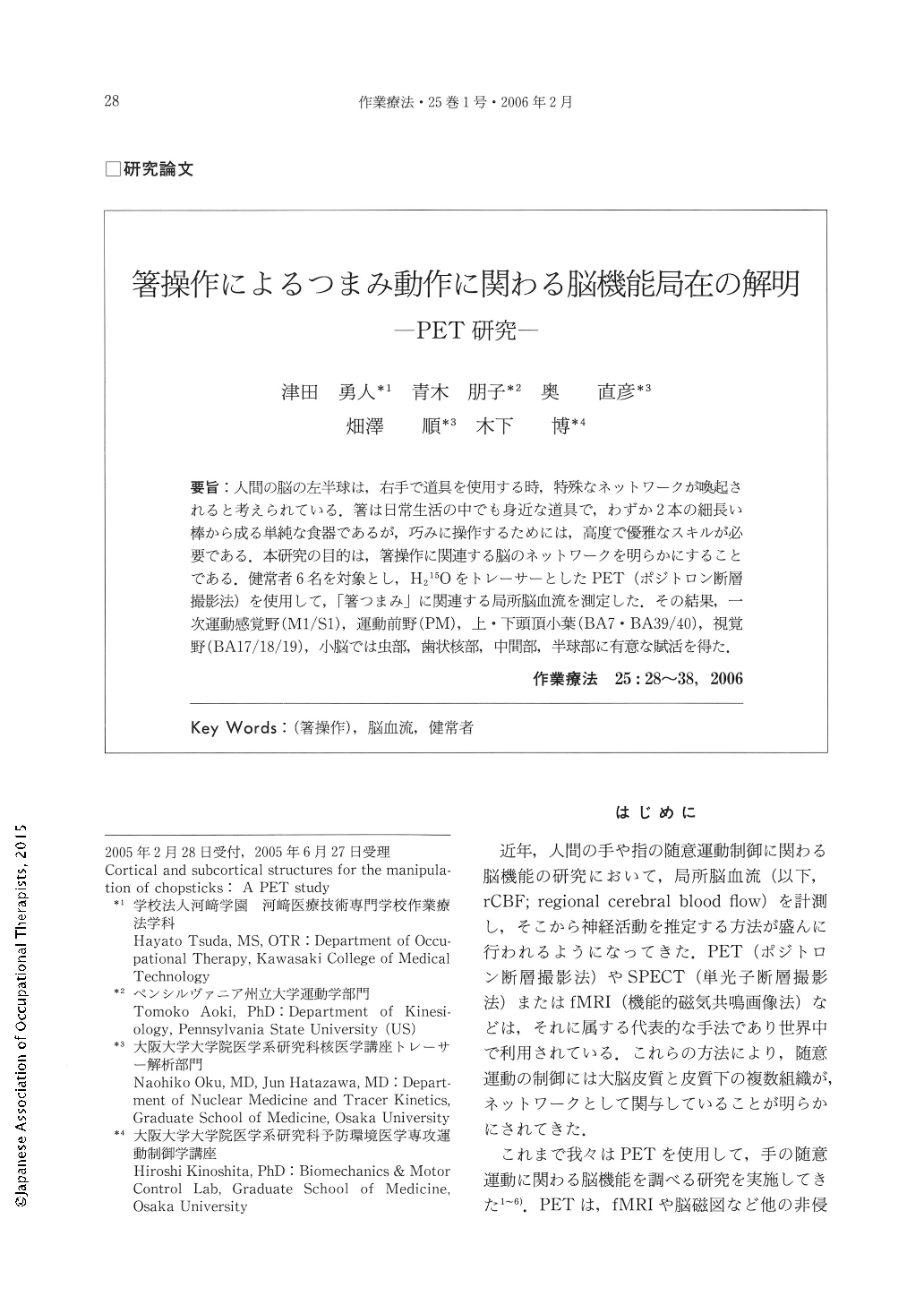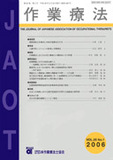Japanese
English
- 販売していません
- Abstract 文献概要
- 1ページ目 Look Inside
- 参考文献 Reference
- サイト内被引用 Cited by
要旨:人間の脳の左半球は,右手で道具を使用する時,特殊なネットワークが喚起されると考えられている.箸は日常生活の中でも身近な道具で,わずか2本の細長い棒から成る単純な食器であるが,巧みに操作するためには,高度で優雅なスキルが必要である.本研究の目的は,箸操作に関連する脳のネットワークを明らかにすることである.健常者6名を対象とし,H215OをトレーサーとしたPET(ポジトロン断層撮影法)を使用して,「箸つまみ」に関連する局所脳血流を測定した.その結果,一次運動感覚野(M1/S1),運動前野(PM),上・下頭頂小葉(BA7・BA39/40),視覚野(BA17/18/19),小脳では虫部,歯状核部,中間部,半球部に有意な賦活を得た.
It is considered that humans have evoked a specialized network in their left hemisphere when using tools with the right hand. Although chopsticks are familiar tableware in daily living and consist simply of only two slender sticks, they demand a highly advanced and elegant skill when they are manipulated properly. The aim of this study was to investigate the functional brain areas associated with manipulation of the chopsticks. An H215O positron emission tomography (PET) was performed using 6 normal volunteers to measure regional cerebral blood flow during picking a small object repetitively. The results showed significant activation of the primary motor area (M1), primary sensory area (S1), premotor area (PM), superior parietal lobule (BA7), inferior parietal lobule (BA39/40), visual cortex (BA17/18/19), vermis, dentate nucleus, paramedian lobule and hemispheres of the cerebellum.

Copyright © 2006, Japanese Association of Occupational Therapists. All rights reserved.


